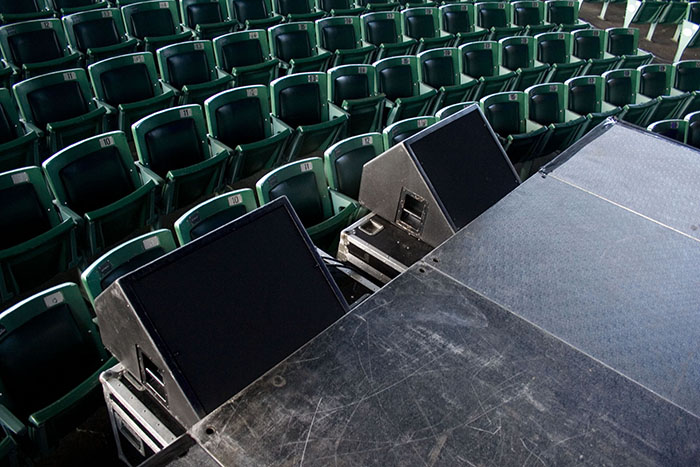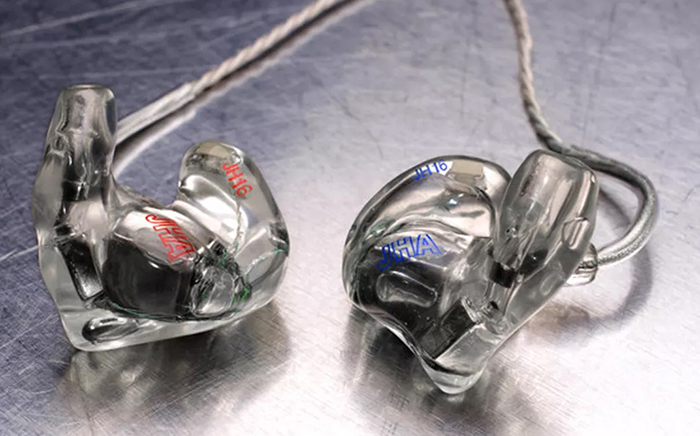
The Next Step
In 1965, the earliest versions of the in-ear monitor had already been developed by Stephen Ambrose at the age of just 13. Forbidden by his father to listen to rock music, he hacked together an earpiece from an old crystal AM radio set.
Ambrose: “The speaker was very, very low quality. But I would listen to it, and I would try to figure out how to get my voice to go through the radio so I could listen to myself and amplify it so that nobody could hear me singing – especially my father. It came with an earbud, but it needed to be transformed. I first used gum – I actually used bubble gum! Then I became much more professional and moved to the big time and used Silly Putty. After that, I hacked open a tape recorder with a mic, took the amplifier out of it, and had it power the first in-ear monitors.”
From that first creation, Ambrose embarked on years of development and refinement of in-ear monitors, most notably with Stevie Wonder, for whom he created custom in-ear moulds using self-curing silicone in the late 1970s.
In 1982 Marty Garcia, who was at the time mixing monitors for Todd Rundgren and who later founded IEM company Future Sonics, solved his client’s problems with vocal fatigue and hearing stress by creating a set of custom-fit earphones. In 1985, the same artist’s Utopia tour was the first wedgeless stage with all band members wearing the Future Sonics new Ear Monitors brand.
Around the same time, IEMs were also being developed by engineer Chris Lindop, both with Stevie Wonder and solo artist Howard Jones. Lindop experimented with giving an earpiece and a hardwired amplifier pack to Jones, and the results were promising.
However, artists being attached to a fixed position on stage by cables was a problem. In the late 1980s, Wonder was the beneficiary of an innovation that would liberate performers to roam freely on stage. Using a 5-watt FM radio station transmitter and a pocket FM receiver, Lindop fed a signal to the transmitter from the monitor console, which then broadcast the monitor mix to the receiver in Wonder’s pocket.
The artist was delighted with the results, and Lindop decided that a more practical system running at lower power (5 watts would have broadcast to most of London!) on legal frequencies was required for a wider market. He joined forces with electronics engineer Martin Noah, and together they formed Garwood Communications, designing the very first commercially available wireless in-ear monitoring system they dubbed the Radio Station.
Wireless microphone system usage was becoming more common among top bands by the late 80s, and so the original system consisted of a 500-milliwatt stereo transmitter within the wireless microphone frequency band of the time – TV channel 69 (854 to 862 MHz). Lindop and Noah knew that the receiver packs needed to be robust and discreet for artists to consider using them, and in 1987 a bodyworn pack went into production.
Early adopters of this technology were Peter Gabriel and Rod Stewart, and the trend towards IEM use – and consequently more elaborate shows and a cleaner stage sound – was underway. However, the systems were still in their infancy, and it would be another decade before IEMs really started to gain ground from the by now long-established floor wedges.
The Modern Era
In 1995 monitor engineer Jerry Harvey was touring with Van Halen, and drummer Alex Van Halen told him that the high stage volume was hurting his ears and making it difficult to communicate with other members of the band. Van Halen was interested in exploring IEMs as a potential solution, so Harvey started researching the idea.
After discovering that the only options were single driver earpieces of a quality he found unsatisfactory, he decided to create his own 2-way custom earpieces, finding a high-frequency driver and the addition of a pacemaker speaker designed to, in Harvey’s words, “Emit a 140 dB tone to tell you the pacemaker was about to give you a zap.”

These tiny loudspeakers were placed into moulded impressions of Van Halen’s ears. They worked superbly, delivering the direct mix while also blocking out ambient noise. In Van Halen’s words, ‘It was like night and day’, and the multidriver IEM was born. Harvey went on to develop continually more refined custom moulds for his first company, Ultimate Ears, and later founded the popular Jerry Harvey Audio.
Word of the improvements to IEM design quickly spread, and musicians who were eager to protect their hearing and experience greater audio clarity enthusiastically adopted the technology. Once only an option for A-list artists, IEMs became available to all musicians, with a wide range of manufacturers and price options on the market worldwide.
